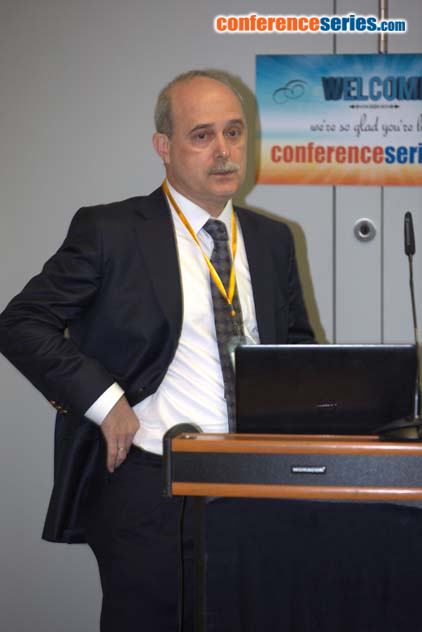
Irfan Alan
Abdullah Gul University, Turkey
Title: A revolutionary inverter and a revolutionary control
Biography
Biography: Irfan Alan
Abstract
Here in this study, a revolutionary inverter technique will be discussed. The goal of this revolutionary technique is to obtain a DC-AC inverter which removes the need for use of known PWM modulation techniques such as multiple PWM, sinusoidal PWM, modified sinusoidal PWM, staircase, stepped, harmonic injected PWM and delta modulated PWM used in the inverter blocks to remove the dominant harmonics and obtain almost harmonic free AC voltage waveforms at the output of the inverters. In the novel technique presented here, the revolutionary inverter is composed of two back-to-back cascaded blocks; one of which is a DC/DC converter and the other is a classical DC/AC inverter. DC/DC converter block is used to obtain the rectified version of the sinusoidal AC voltage waveform desired to be obtained at the output of the inverter and the DC/AC block is used to obtain the desired sinusoidal output voltage waveform from the rectified version of itself formed at the output of the DC/DC converter with only a single loss free switching action in every half cycle of the sinusoidal AC output voltage waveform. In this way, the switching losses associated with the high switching frequencies of classical PWM techniques are eliminated. Besides, the need for classical high valued capacitor utilized in the DC bus to remove the ripples is eliminated because the DC bus voltage waveform is not a ripple free DC bus voltage anymore. In fact, it should be in the form of a rectified sinusoid voltage waveform desired to be obtained at the output of the inverter. Just because of this reason, the DC bus capacitor should actually be valued in small sizes so that it could discharge to zero voltage levels required to form the rectified sinusoid waveform at the output of the DC/DC converter. This means a cost reduction in capacitor sizing. A dynamic duty cycle adjustment is necessary for the control of DC/DC converter to achieve this goal. This dynamic duty cycle control is the most critical part of the revolutionary control, and the second part of the revolutionary control is its requirement for only one loss free switching action due to its zero voltage switching at every half cycle of the desired sinusoidal voltage waveform.
Recent Publications
1.Celebi M, Alan I (2010) “A novel approach for a sinusoidal output inverter”, ELECTRICAL ENGINEERING, Vol. 92, Issue: 7-8, pp. 239-244, December 2010.
2. Akin O, Alan I (2010) “The use of FPGA in Field-Oriented Control of an Induction Machine”, Turk J Elec Eng & Comp Sci, Vol.18, No.6, pp. 943-962, TÜBÄ°TAK, doi:10.3906/elk-0905-40, November 2010.
3. Gokalan R, Alan I (2010) “Control of Variable Speed Permanent Magnet Synchronuous Generator for Wind Turbine Application”, International Symposium on Computing in Science and Engineering, ISCSE’2010, Conference Proceedings, Proceeding Number: 206, June 3-5, 2010.
4. Alan I, Lipo TA (2003) "Induction Machine Based Flywheel Energy Storage System", IEEE Transactions on Aerospace and Electronic Systems, Vol.39, No.1, January 2003, pp.151-163.
5.Goksu S, Alan I (2003), "250W Flyback SMPS Design for a Big Size Color TV", IEEE Transactions on Consumer Electronics, Vol.49, No:4, November 2003, pp. 911-916.
6. Alan I, Lıpo TA (2000) "Starter/Generator Employing Resonant Converter Fed Induction Machine, Part I: Analysis", IEEE Transactions on Aerospace and Electronic Systems, Vol.36, No.4, pp. 1309-1318, October 2000.
7. Alan I, Lıpo TA (2000) "Starter/Generator Employing Resonant Converter Fed Induction Machine, Part II: Hardware Prototype", IEEE Transactions on Aerospace and Electronic Systems, Vol.36, No.4, pp. 1319-1329, October 2000.


